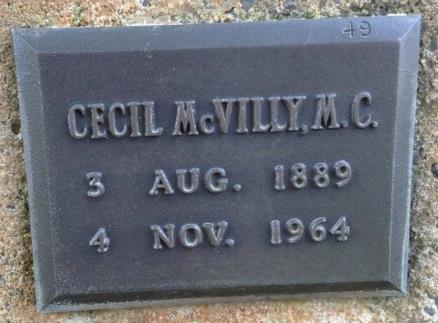![Caption: From right to left: Ray Ebert [RQL], NSW Governor – General David Hurley and his wife, the Mayor of Penrith, and Anne Tucker in NSW colours of light blue, the first recipient on the day, receiving Pin 71 for her father Nimrod Greenwood.](https://heartheboatsing.files.wordpress.com/2016/03/ray-ebert-etc.jpg?w=723&h=333)
Louis Petrin, HTBS contributor and member of Drummoyne Rowing Club, Australia, writes:
On Sunday, 20 March, the 2016 Interstate Regatta was held at SIRC Penrith. The major races, the King’s Cup and Queen’s Cup, were won by Victoria.
What was most notable on the day was the awarding of the McVilly-Pearce Pin to a number of rowers and family members of past rowers by Rob Scott (Chairman, Rowing Australia, Pin 447). For HTBS followers, historical medals are always a hit.
It was last year, on Friday 23 October, that Rowing Australia launched the McVilly-Pearce Pin, named after Cecil “Mac” McVilly, a Tasmanian who rowed for Australia at the Olympic Games in Stockholm in 1912, and Henry “Bobby” Pearce, who won Australia’s first Olympic gold medal in rowing in the single sculls at the Amsterdam Games in 1928 and then defended his Olympic title in Los Angeles in 1932.
The McVilly-Pearce Pin is a two-piece pin, 18mm in diameter and made of bronze and copper with an antique patina centerpiece. The pin can only be presented to someone by another recipient of the pin.
Every rower who has represented Australia at a senior level, at either a World Rowing Championships, Olympic or Paralympic Games, or a Commonwealth Games, will now receive a specially numbered pin to commemorate the first time they were selected to be part of an elite group of men and women who have had the honour to represent Australia on the world rowing stage.
To date, there are 827 athletes who have represented Australia at this senior level.
Every athlete has been delegated a number from the first time they were selected and raced for the senior Australian rowing team. Each pin has an individual number and will be presented in an individual case to those rowers who have represented Australia dating back as far as 1912 through to the present day.
Pin number 1 went to McVilly, and 2 to 11 were numbered for the crew of the men’s eight that also went to the 1912 Olympics. Bobby Pearce’s pin number is 21.
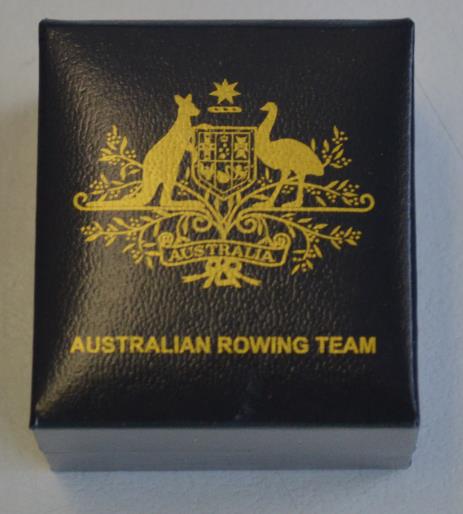

Nimrod Greenwood rowed in 3 seat of the Australian boat which won the bronze medal in the eights event at the 1952 Helsinki Olympics.
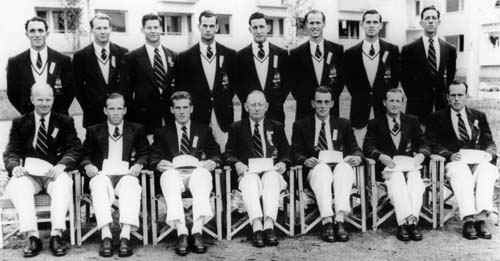
Also present on the day was David Palfreyman, grandson of McVilly, who himself has Pin 137 for representing Australia at the 1962 British Empire & Commonwealth Games men’s eight cox, winning gold.
The First Australian Rowing Representatives
![Caption: The Australasian (combined Australian and New Zealand) Olympic Team at Stockholm’s Roddförening [Rowing Association] in 1912.](https://heartheboatsing.files.wordpress.com/2016/03/the-australasian-combined-australian-and-new-zealand-olympic-team-at-stockholms-roddforening-rowing-association-1912.jpg?w=723)
The first Australian representative rowers were: John A Ryrie, bow, Simon Fraser, Hugh K Ward, Thomas Chas Parker, Henry Hauenstein, Sydney A Middleton, Harry Ross-Boden, Roger B Fitzhardinge, stroke, Robert GK Waley, cox.
The next day brought a second round of heats where Australasia faced Great Britain (Leander Club) and, sadly this time, lost by 3 lengths.
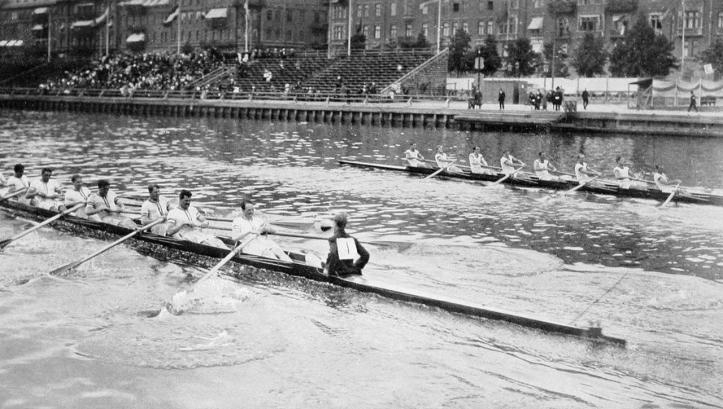
Australia was represented in two rowing events at the Games in Stockholm, singles and eights. And so it was that Cecil McVilly was next to row for Australia, his single sculls event taking place three hours after the Men’s Eight on Wednesday.
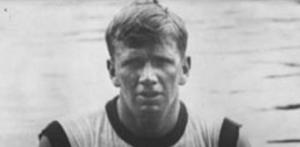
Cecil Leventhorpe McVilly [1889-1964] – his life story
Sculler, soldier and public servant, Cecil McVilly was born on 3 August 1889 in Hobart, son of Joseph Henry McVilly, press reader and later newspaper editor, and his wife Marion Jane Thompson, née Smith.
Educated at the Hutchins School and Queen’s College, Hobart, Cecil was a member of the senior cadets and a noted sculler. McVilly commenced his career on the water in his school days, when he rowed for Queen’s College.
His first appearance as a sculler was at New Norfolk in 1908, when he won both the Maiden Sculls and the Ellis Dean Cup at the Norfolk Regatta.
In April 1909, Cecil faced Frederick Coverdale (Sandy Bay RC) at the Tasmanian Championships on a shortened course of about two and half miles, starting at Risdon Point to a point opposite Derwent Club’s shed. Coverdale led from start to finish, and won easily by about five lengths. It was reported McVilly lacked Coverdale’s finish.

Following this, McVilly came third in the Alexandra Sculls at the Hobart Regatta in January 1910, behind Littlechild and Muir.
Cecil continued to train and went on to win the Australian Amateur Championship in sculling on the Derwent River on April 1910, defeating Percy Ivens [VIC] and Archie Priddle [NSW].
Later in September, McVilly was rowing on the Parramatta River, with George Towns as his trainer in preparation of defending his title on May 1911. During his stay at the Bayview Hotel in Gladesville, he was made an honorary member of North Shore RC. By November he was back home in Hobart.

At the 1911 Interstate Championships held in May on the Parramatta River, McVilly defeated John R Towns [NSW] and Horace E Stephens [VIC]. In 1911, he also won the Alexandra Sculls, Tasmanian Sculling Championship and Elllis Dean Cup.
Following his success in Australian rowing, Cecil McVilly went to England in 1912 to further test himself at Henley Royal Regatta and then the Olympic Games two weeks later.
McVilly was provided with £50 by John Lang of the Melbourne Amateur Regatta for his expenses at the 1912 Olympics.
McVilly was to only find disappointment at Henley on 5 July. Wearing the colours of the Derwent Rowing Club, white with red Maltese cross, he faced Alexander McCulloch of Leander in heat 6 of the Diamond Challenge Sculls, the premier amateur single scullers race of the time. McCulloch was born in Melbourne and his father “made a pile” in BHP shares and returned to England when Alexander was four.
McVilly started well. He went off at 34 strokes compared to McCulloch’s 30. The Englishman’s finish was not very clean, and he was soon a length behind the Tasmanian, who was sculling deep. Then McCulloch, pulling consistently, and keeping a good course, began to creep up. McVilly was denied an opportunity to steady down, and was put off his stride. At the half-mile, McCulloch was still three-quarters of a length behind but at the Farm he closed the gap and at Fawley, McVilly was only just ahead. A few more strokes and McCulloch took the lead and McVilly was steering badly. At the three-quarter mile mark McVilly faltered. McCulloch went on to beat McVilly by six lengths in a time of 8 minutes and 54 seconds.

It was on Wednesday, 17 July at 3.20pm that Cecil McVilly became the first Tasmanian Olympian when he rowed in the single sculls event for Australasia.
McVilly faced Martin Stahnke, Germany, in the first round of the single sculls. McVilly took an early lead and was first across the line by several lengths. However, McVilly was disqualified for steering a course that resulted in a collision with Stahnke’s boat, causing the German to stop rowing for a moment.
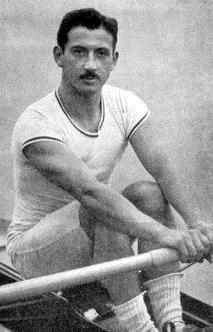
McVilly’s steering problems had plagued him since leaving Australia, and lost the race of his life.
Following his disappointments at Henley and the Olympics, McVilly stayed in London where he gained a job with the intention of having another go at the Diamond Sculls at Henley. He trained from the shed of the London Rowing Club. It was reported that he was in first-class condition for starting and around 17 May weighing 13.6 stones (just over 85kg), but expected to row at 12.6 or 12.8 (79 kg).
In June 1913, McVilly won the Challenge Sculls at the Marlow Regatta, two weeks before Henley Royal Regatta. Representing Derwent Rowing Club, he won the Diamonds beating E Pink, becoming the first Australian-based rower to win this event. He won a fine race by a length in a time of 8:49. For that achievement, more than 30 years later, he was retrospectively awarded a Helms Trophy as the ‘foremost amateur athlete in Australasia’.
For pedants, the first Australian sculler to win Diamonds was Frederick Septimus Kelly in 1902 but he was studying and living at Balliol College, Oxford, as well as being in the winning Leander eight at the 1908 Olympics.
Sadly the Committee for the 1913 Wingfield Sculls refused McVilly’s entry, arguing he was not born in England even though others like B H Howell (1898 and 1899), F S Kelly (1903) and E L Salier (1913; another Tasmanian) were allowed to race.
McVilly was Australian sculling champion again in May 1914 at the Interstate Championships on the Lower Yarra, defeating Len Sydney Davis [VIC] and Edward D Thomas [SA]. At these same championships, McVilly also coached the winning Tasmanian crew for the Interstate eight-oared championship.
Sadly, the First World War was to break out, ruining the lives of many, especially for the rowing fraternity.
McVilly had served with the Derwent Infantry for four years, becoming a sergeant. He was then commissioned as second lieutenant into the Australian Imperial Force on 9 December 1915 and was posted to ‘B’ Company, 40th Battalion, an all-Tasmanian unit. McVilly was promoted to lieutenant on 1 May 1916 and in July went to England for training. He went to France on 23 November 1916 and was promoted to captain in December. At the beginning of 1917, he was training raiding parties at the Ecole Professionale, Armentières.
During the Battle of Messines, on 6-7 June 1917, McVilly stood up leading his men forward until he was severely wounded and so was awarded the Military Cross for leadership under intensive enemy bombardment. In his book The Fortieth: A Record of the 40th Battalion, F C Green writes:
The machine gun fire had become very heavy, and B Company were singularly unfortunate in the way of casualties. In front of his company the tall figure of Capt. McVilly stood out, calling his company to follow him, but before going far this gallant officer was seriously wounded.
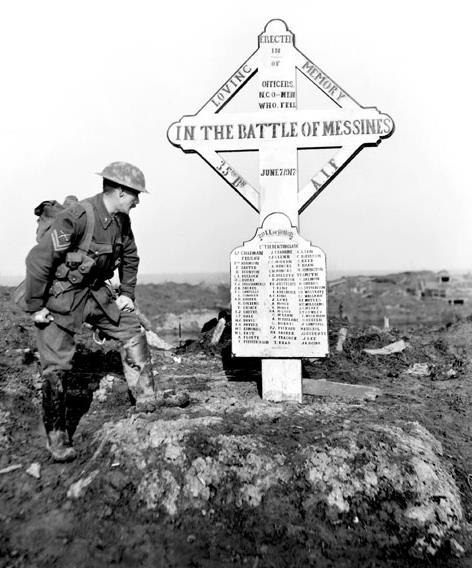
He was again badly wounded during the Third Battle of Ypres, at Broodseinde on 4 October.
McVilly was picked for special service in Mesopotamia and on 29 January 1918 set out for Basra in the Persian Gulf. He joined Dunsterforce on 28 March, and took part in the defence of Baku on the Caspian Sea in August. He was mentioned in dispatches on 21 February 1919 for special service in Mesopotamia. He returned to Australia from England in March 1919.
McVilly became a captain on the reserve of officers of the Australian Military Forces. From 1919 to 1929, McVilly worked for the Repatriation Commission in Tasmania.
At the 1921 Interstate Championships held on the Tama River, McVilly rowed 7 seat in the Tasmanian eight crew that came second behind WA. McVilly next coached the Tasmanian eight, that came second in 1925 and won in 1926 in the King’s Cup. He went on to become Secretary of the Tasmanian Rowing Association.
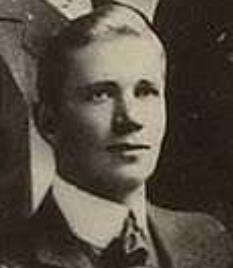
Cecil McVilly was appointed sole selector for the 1928 Olympics, where he chose Henry “Bobby” Pearce for the men’s single scull, Australia’s only rowing representative at these Games.
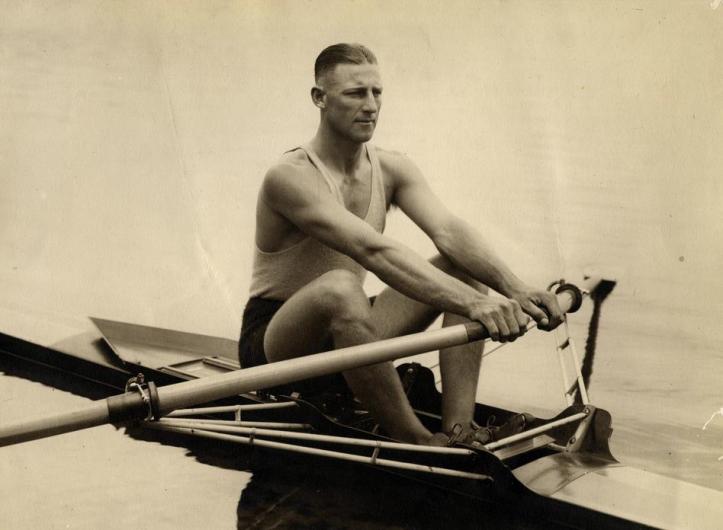
Pearce, as the other half of McVilly-Pearce Pin, will be a subject of another story in the future.
In 1929, McVilly was appointed Inspector of Charities in Victoria. He became Chairman of the Victorian Hospitals and Charities Commission in 1948. After retirement, he moved to Cowes, Phillip Island.
In June of1953, McVilly was presented with a Queen Elizabeth II Coronation Medal by the Governor, Sir Dallas Brooks, for his contribution to the community.
Cecil Leventhorpe McVilly died on 4 November 1964 at the age of 75 and was buried at the Springvale Botanical Cemetery.

